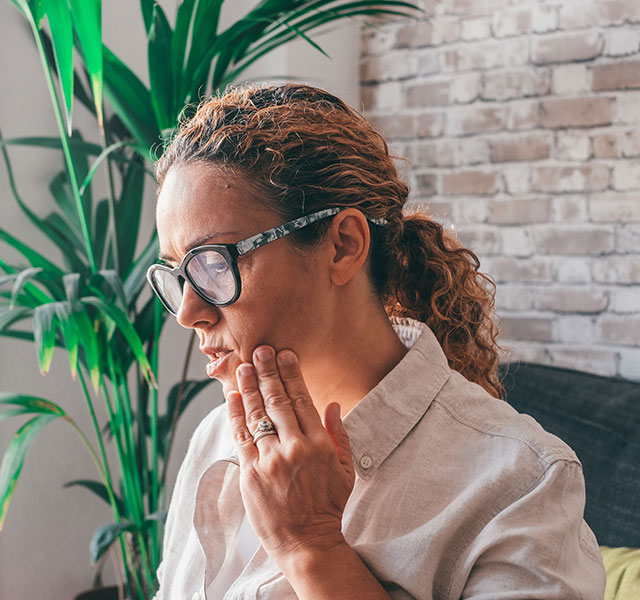When someone develops drooping facial features and slurred speech, your first thought might be that they are having a stroke. While these are common stroke indicators, they can also be signs of Bell’s palsy, a common medical problem that is often much less severe. Here, Daniel Miller, M.D., a neurologist at Henry Ford Health, explains the key factors that differentiate Bell’s palsy from a stroke.
Q: What is Bell’s palsy?
Dr. Miller: There are many different types of palsies, but Bell’s palsy is the most common. It occurs when swelling of the facial nerves causes a patient to experiencing paralysis on one side of the face. This is different from stroke in that stroke causes damage to the brain. Bell’s palsy just impacts the facial nerves.
Bell’s palsy just kind of happens. In some cases, it may be brought on by certain viral infections, but there are not a lot of indicators that someone will develop this condition.
Q: How can you tell the difference between a stroke and Bell’s palsy?
Dr. Miller: When someone has Bell’s palsy, their facial muscles are the only part of the body that is impacted. This is different from stroke, which can impact vision and mobility in your arms and legs. We use the FAST acronym (Face drooping, Arm weakness, slurred Speech, Time to call 911) to identify key stroke indicators. Bell’s palsy may cause other symptoms that can help your doctor easily diagnose including:
- Tingling in or around the ear
- Loss of taste
- Trouble eating or closing your mouth
- Facial drooping that comes on slowly
- Eye issues (trouble closing the eye or raising eyebrows)
Q: Are some people more at risk for Bell’s palsy than others?
Dr. Miller: Yes. Some health factors that can put you at greater risk include:
- Diabetes
- Obesity
- Pregnancy
- Chronic respiratory issues
Q: What should you do if you think you have Bell’s palsy?

Neurology at Henry Ford
Dr. Miller: If you aren’t sure the symptoms are that of a stroke or Bell’s palsy, still seek medical attention immediately. In both cases, being seen right away improves your chances for a faster recovery. With Bell’s palsy, if your doctor is able to administer steroids within the first 72 hours of your symptoms appearing, it can reduce your recovery time dramatically.
Q: How do neurologists play a role in treating Bell’s palsy?
Dr. Miller: In some cases, a neurologist might be the one to diagnose your Bell’s palsy, though your primary care doctor or an emergency medicine doctor can often diagnose first based on your symptoms. You might be referred to a neurologist if your case isn’t improving or there is concern that your symptoms are related to something more severe. In this case, a neurologist may perform additional testing to rule out other complications. These tests might include:
- Electromyography (EMG) nerve test: evaluates if the swelling is causing any additional nerve damage
- Brain imaging: sees if there is a secondary cause to the Bell’s palsy such as a tumor or mass that is compressing the facial nerve
- MRI: used to rule out a compressive legion or an atypical stroke
Q: Does Bell’s palsy have long term effects on the body?
Dr. Miller: Fortunately, Bell’s palsy goes away on its own, but it will take some time. In severe cases, 70% of patients will recover in six months after initial symptoms. In more mild cases, 94% will recover in six months. Note though, that recovery varies on a case-by-case basis. Some people may begin to see results in a few weeks, others may take much longer to improvement.
As you recover, you may still experience trouble eating or face drooping for some time. In cases where Bell’s palsy has caused drooping around the eye or prevents you from closing your eye completely, eye care is extremely important. Dry eye is very common, so your doctor might recommend a patch to wear at night or drops to keep the eye moist. Proper eye care helps avoid issues such as cornea scratches or damage. If these symptoms continue, talk with your eye doctor to learn more about procedures to help avoid long term eye damage or injury.
Reviewed by Dr. Daniel Miller, a vascular neurologist who sees patients at Henry Ford Hospital in Detroit.



